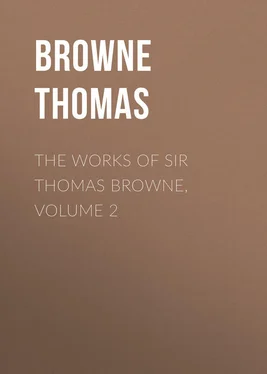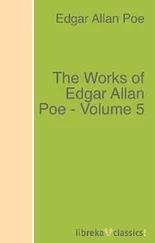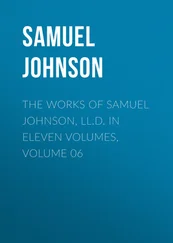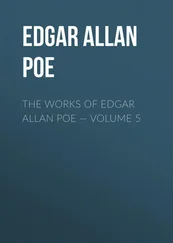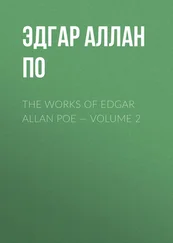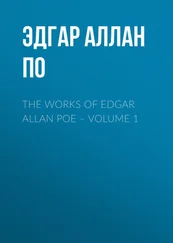Thomas Browne - The Works of Sir Thomas Browne, Volume 2
Здесь есть возможность читать онлайн «Thomas Browne - The Works of Sir Thomas Browne, Volume 2» — ознакомительный отрывок электронной книги совершенно бесплатно, а после прочтения отрывка купить полную версию. В некоторых случаях можно слушать аудио, скачать через торрент в формате fb2 и присутствует краткое содержание. ISBN: , Жанр: foreign_antique, foreign_prose, на английском языке. Описание произведения, (предисловие) а так же отзывы посетителей доступны на портале библиотеки ЛибКат.
- Название:The Works of Sir Thomas Browne, Volume 2
- Автор:
- Жанр:
- Год:неизвестен
- ISBN:http://www.gutenberg.org/ebooks/39961
- Рейтинг книги:5 / 5. Голосов: 1
-
Избранное:Добавить в избранное
- Отзывы:
-
Ваша оценка:
- 100
- 1
- 2
- 3
- 4
- 5
The Works of Sir Thomas Browne, Volume 2: краткое содержание, описание и аннотация
Предлагаем к чтению аннотацию, описание, краткое содержание или предисловие (зависит от того, что написал сам автор книги «The Works of Sir Thomas Browne, Volume 2»). Если вы не нашли необходимую информацию о книге — напишите в комментариях, мы постараемся отыскать её.
The Works of Sir Thomas Browne, Volume 2 — читать онлайн ознакомительный отрывок
Ниже представлен текст книги, разбитый по страницам. Система сохранения места последней прочитанной страницы, позволяет с удобством читать онлайн бесплатно книгу «The Works of Sir Thomas Browne, Volume 2», без необходимости каждый раз заново искать на чём Вы остановились. Поставьте закладку, и сможете в любой момент перейти на страницу, на которой закончили чтение.
Интервал:
Закладка:
As for the stone commonly called a Toad-stone, which is presumed to be found in the head of that animal, we first conceive it not a thing impossible: nor is there any substantial reason why in a Toad there may not be found such hard and lapideous concretions. For the like we daily observe in the heads of Fishes, as Cods, Carps, and Pearches: the like also in Snails, a soft and exosseous animal, whereof in the naked and greater sort, as though she would requite the defect of a shell on their back, Nature near the head hath placed a flat white stone, or rather testaceous concretion. Which though Aldrovandus affirms, that after dissection of many, he found but in some few: yet of the great gray Snails, I have not met with any that wanted it: and the same indeed so palpable, that without dissection it is discoverable by the hand.
Again, though it be not impossible, yet it is surely very rare: as we are induced to believe from some enquiry of our own, from the trial of many who have been deceived, and the frustrated search of Porta , who upon the explorement of many, could scarce find one. Nor is it only of rarity, but may be doubted whether it be of existencie, or really any such stone in the head of a Toad at all. For although Lapidaries and questuary enquirers affirm it, yet the Writers of Minerals and natural speculators, are of another belief: conceiving the stones which bear this name, to be a Mineral concretion; not to be found in animals, but in fields. And therefore Bœtius refers it to Asteria or some kind of Lapis stellaris , and plainly concludeth, reperiuntur in agris, quos tamen alii in annosis ac qui diu in Arundinetis inter rubos sentesque delituerunt bufonis capitibus generari pertinaciter affirmant .
Lastly, If any such thing there be, yet must it not, for ought I see, be taken as we receive it, for a loose and moveable stone, but rather a concretion or induration of the crany it self; for being of an earthy temper, living in the earth, and as some say feeding thereon, such indurations may sometimes happen. Thus when Brassavolus after a long search had discovered one, he affirms it was rather the forehead bone petrified, then a stone within the crany; and of this belief was Gesner . Which is also much confirmed from what is delivered in Aldrovandus , upon experiment of very many Toads, whose cranies or sculs in time grew hard, and almost of a stony substance. All which considered, we must with circumspection receive those stones which commonly bear this name, much less believe the traditions, that in envy to mankind they are cast out, or swallowed down by the Toad; which cannot consist with Anatomy , and with the rest, enforced this censure from Bœtius , Ab eo tempore pro nugis habui quod de Bufonio lapide, ejusque origine traditur.
What therefore best reconcileth these divided determinations, may be a middle opinion; that of these stones some may be mineral, and to be found in the earth; some animal, to be met with in Toads, at least by the induration of their cranies. The first are many and manifold, to be found in Germany and other parts; the last are fewer in number, and in substance not unlike the stones in Crabs heads. This is agreeable unto the determination of Aldrovandus De Mineral. lib. 4. Musæi Calceolariani, Sect. 3., and is also the judgment of learned Spigelius in his Epistle unto Pignorius .
But these Toadstones, at least very many thereof, which are esteemed among us, are at last found to be taken not out of Toads heads, but out of a Fishes mouth, being handsomely contrived out of the teeth of the Lupus Marinus , a Fish often taken in our Northern Seas, as was publickly declared by an eminent and learned Physitian.Sir George Ent . But because men are unwilling to conceive so low of their Toadstones which they so highly value, they may make some trial thereof by a candentorned hot Iron applied unto the hollow and unpolished part thereof, whereupon if they be true stones they will not be apt to burn or afford a burnt odour, which they may be apt to do, if contrived out of animal parts or the teeth of fishes.
Concerning the generation of Frogs, we shall briefly deliver that account which observation hath taught us. By Frogs I understand not such as arising from putrefaction, are bred without copulation, and because they subsist not long, are called Temporariæ ; nor do I mean the little Frog of an excellent Parrat green, that usually sits on Trees and Bushes, and is therefore called Ranunculus viridis , or arboreus ; but hereby I understand the aquatile or Water-Frog, whereof in ditches and standing plashes we may behold many millions every Spring in England . Now these do not as Pliny conceiveth, exclude black pieces of flesh, which after become Frogs; but they let fall their spawn in the water, of excellent use in Physick, and scarce unknown unto any. In this spawn of a lentous and transparent body, are to be discerned many specks, or little conglobulations, which in a small time become of deep black, a substance more compacted and terrestrious then the other; for it riseth not in distillation, and affords a powder when the white and aqueous part is exhaled. Now of this black or dusky substance is the Frog at last formed; as we have beheld, including the spawn with water in a glass, and exposing it unto the Sun. For that black and round substance, in a few days began to dilate and grow longer, after a while the head, the eyes, the tail to be discernable, and at last to become that which the Ancients called Gyrinus , we a Porwigle or Tadpole. This in some weeks after becomes a perfect Frog, the legs growing out before, and the tail wearing away, to supply the other behind; as may be observed in some which have newly forsaken the water; for in such, some part of the tail will be seen, but curtailed and short, not long and finny as before. A part provided them a while to swim and move in the water, that is, untill such time as Nature excluded legs, whereby they might be provided not only to swim in the water, but move upon the land, according to the amphibious Amphibious Animals, such as live in both elements of land and water. and mixt intention of Nature, that is, to live in both. So that whoever observeth the first progression of the seed before motion, or shall take notice of the strange indistinction of parts in the Tadpole, even when it moveth about, and how successively the inward parts do seem to discover themselves, until their last perfection; may easily discern the high curiosity of Nature in these inferiour animals, and what a long line is run to make a Frog.
And because many affirm, and some deliver, that in regard it hath lungs and breatheth, a Frog may be easily drowned; though the reason be probable, I find not the experiment answerable; for fastning one about a span under water, it lived almost six days. Nor is it only hard to destroy one in water, but difficult also at land: for it will live long after the lungs and heart be out; how long it will live in the seed, or whether the spawn of this year being preserved, will not arise into Frogs in the next, might also be enquired: and we are prepared to trie.
CHAPTER XIV
Of the Salamander
That a Salamander is able to live in flames, to endure and put out fire, is an assertion, not only of great antiquity, but confirmed by frequent, and not contemptible testimony. The Egyptians have drawn it into their Hieroglyphicks, Aristotle seemeth to embrace it; more plainly Nicander , Sarenus Sammonicus , Ælian and Pliny , who assigns the cause of this effect: An Animal (saith he) so cold that it extinguisheth the fire like Ice. All which notwithstanding, there is on the negative, Authority and Experience; Sextius a Physitian, as Pliny delivereth, denied this effect; Dioscorides affirmed it a point of folly to believe it; Galen that it endureth the fire a while, but in continuance is consumed therein. For experimental conviction, Mathiolus affirmeth, he saw a Salamander burnt in a very short time; and of the like assertion is Amatus Lusitanus ; and most plainly Pierius , whose words in his Hieroglyphicks are these: Whereas it is commonly said that a Salamander extinguisheth fire, we have found by experience, that it is so far from quenching hot coals, that it dieth immediately therein. As for the contrary assertion of Aristotle , it is but by hear say, as common opinion believeth, Hæc enim (ut aiunt) ignem ingrediens, eum extinguit ; and therefore there was no absurdity in Galen , when as a Septical medicine A corruptive Medicine destroying the parts like Arsenike. he commended the ashes of a Salamander; and Magicians in vain from the power of this Tradition, at the burning of Towns or Houses expect a relief from Salamanders.
Читать дальшеИнтервал:
Закладка:
Похожие книги на «The Works of Sir Thomas Browne, Volume 2»
Представляем Вашему вниманию похожие книги на «The Works of Sir Thomas Browne, Volume 2» списком для выбора. Мы отобрали схожую по названию и смыслу литературу в надежде предоставить читателям больше вариантов отыскать новые, интересные, ещё непрочитанные произведения.
Обсуждение, отзывы о книге «The Works of Sir Thomas Browne, Volume 2» и просто собственные мнения читателей. Оставьте ваши комментарии, напишите, что Вы думаете о произведении, его смысле или главных героях. Укажите что конкретно понравилось, а что нет, и почему Вы так считаете.
